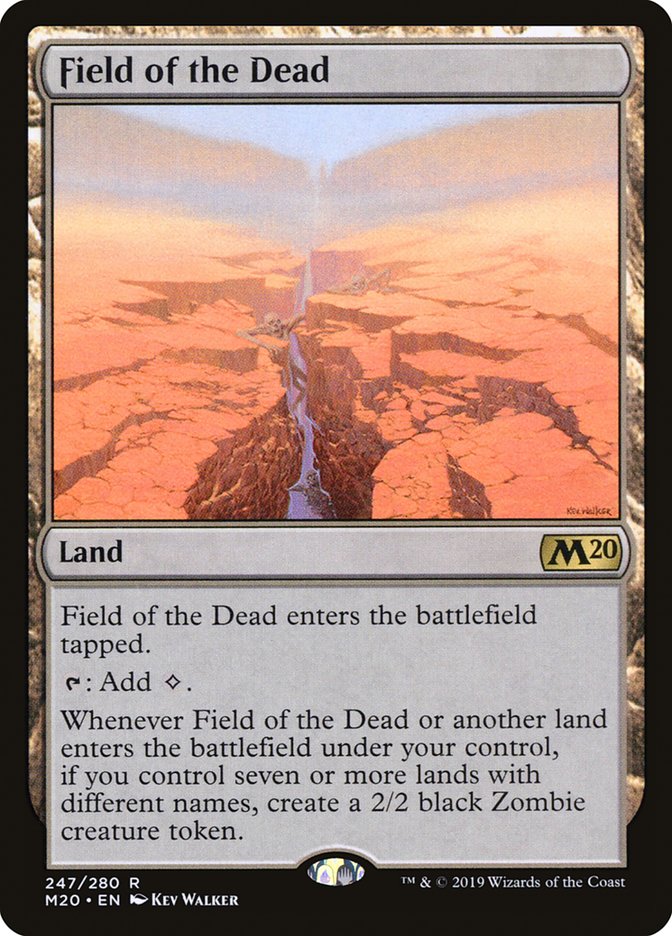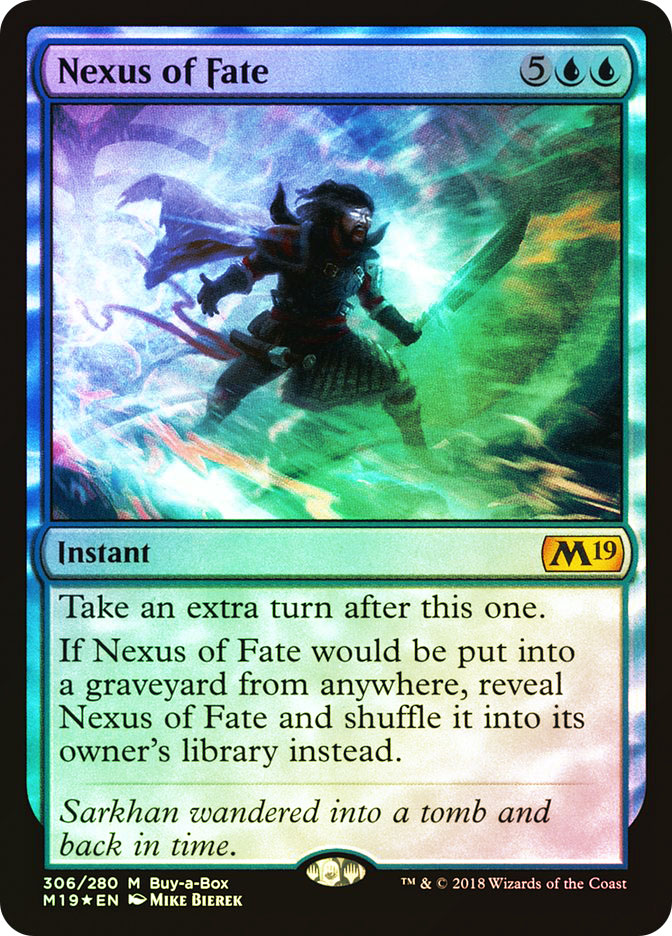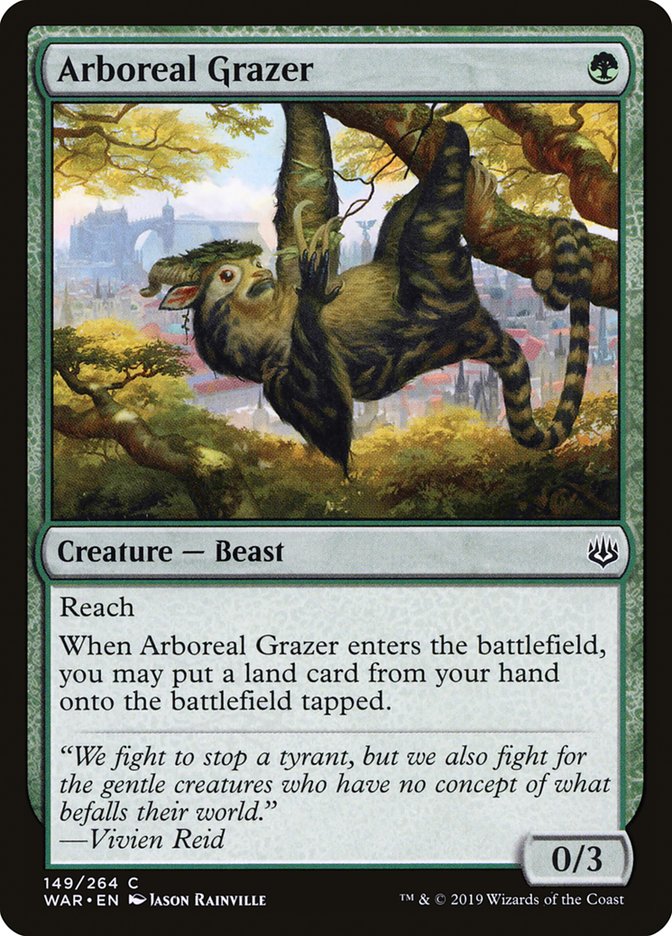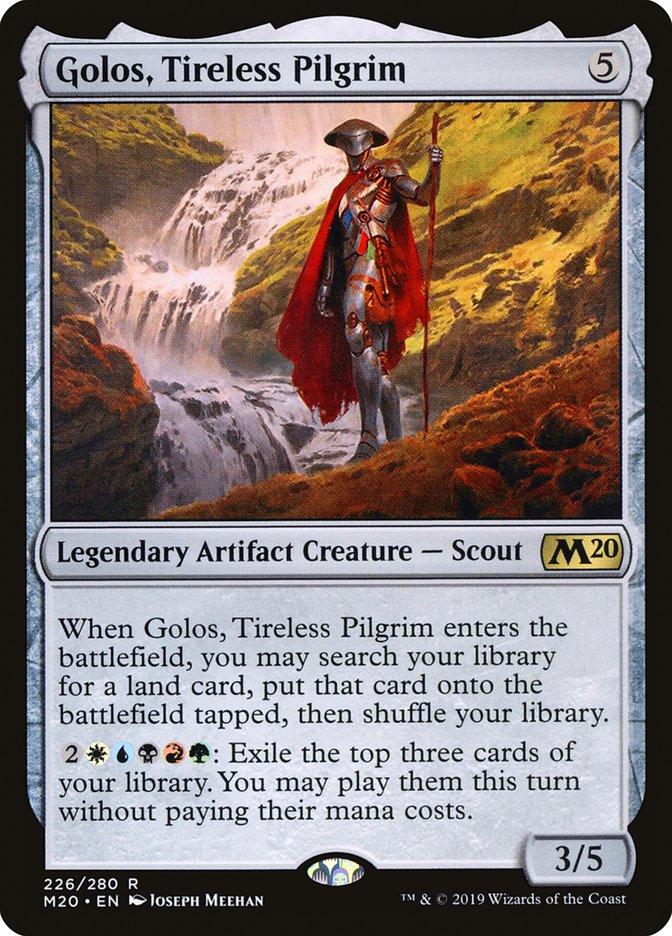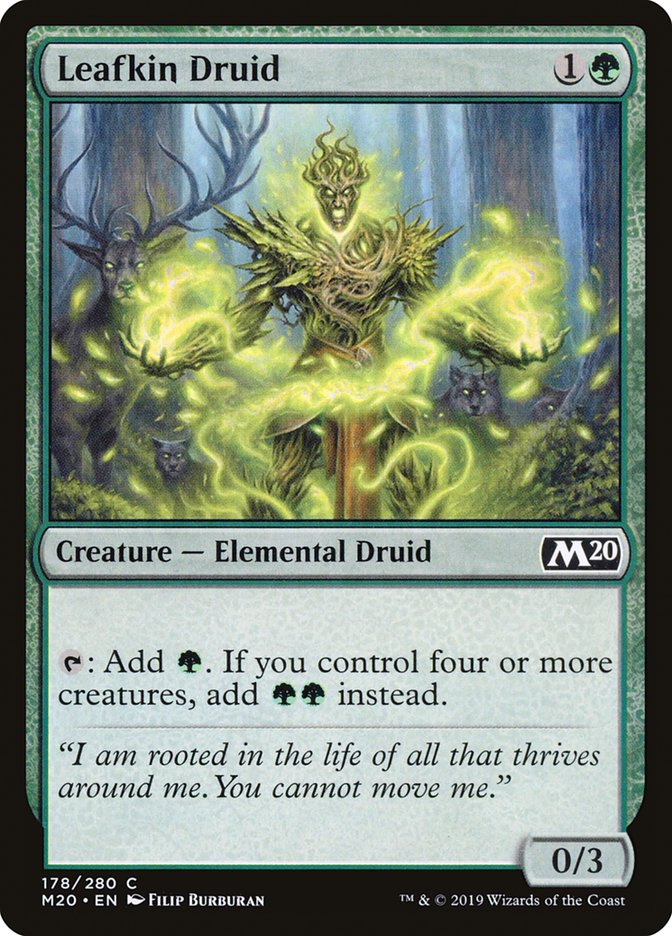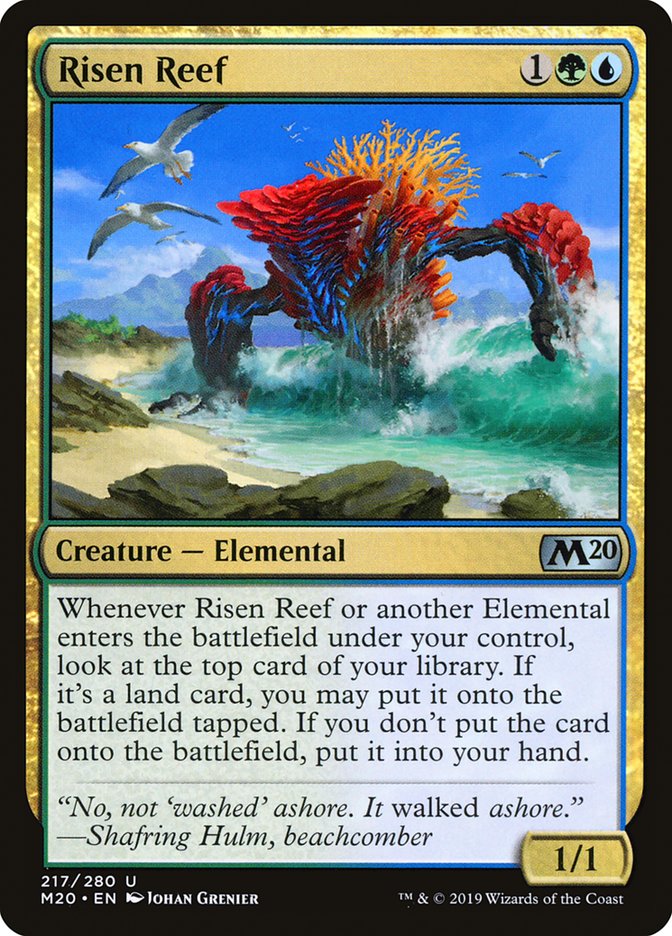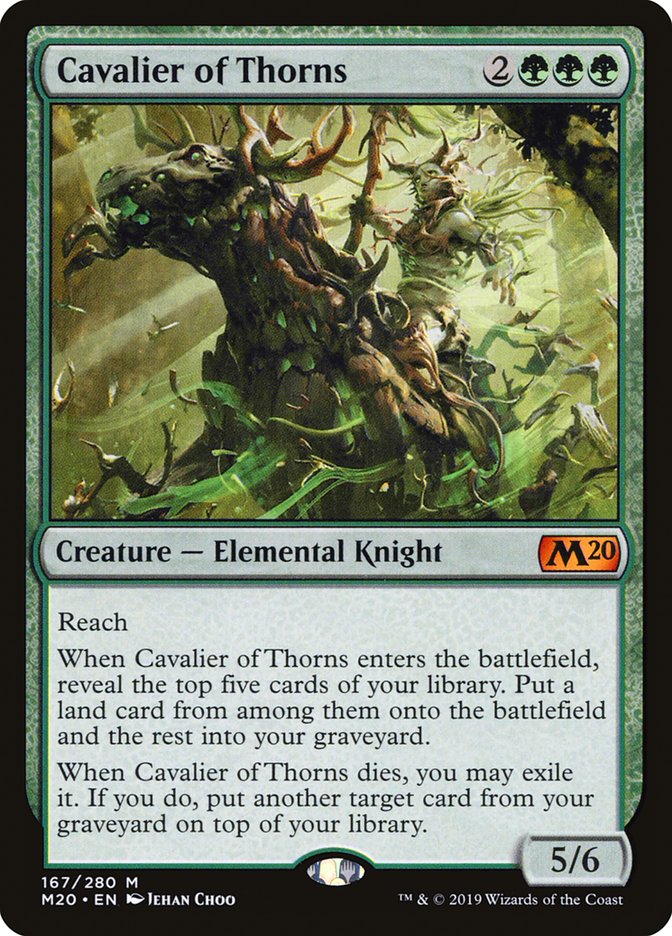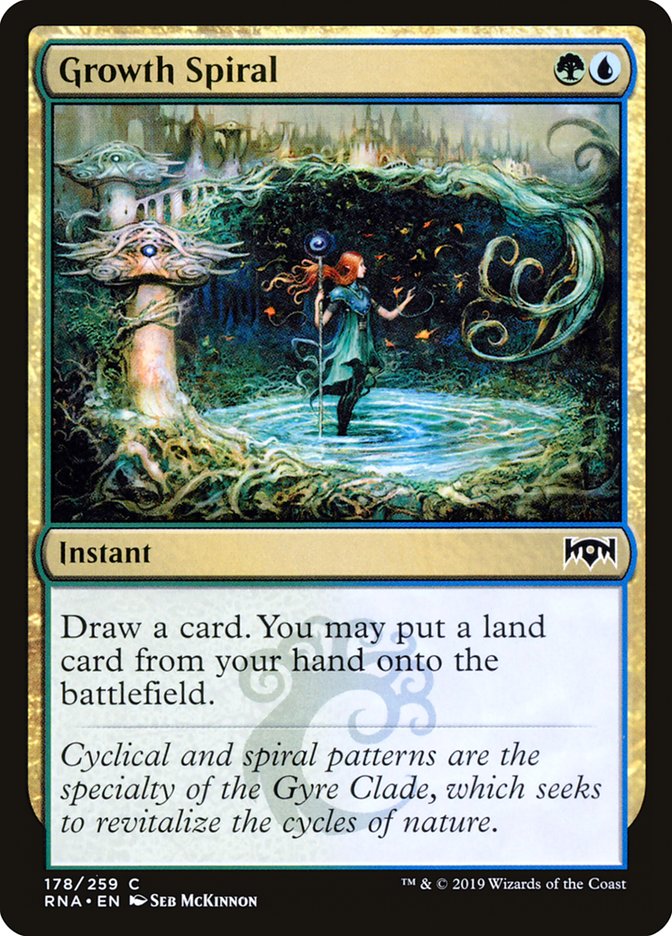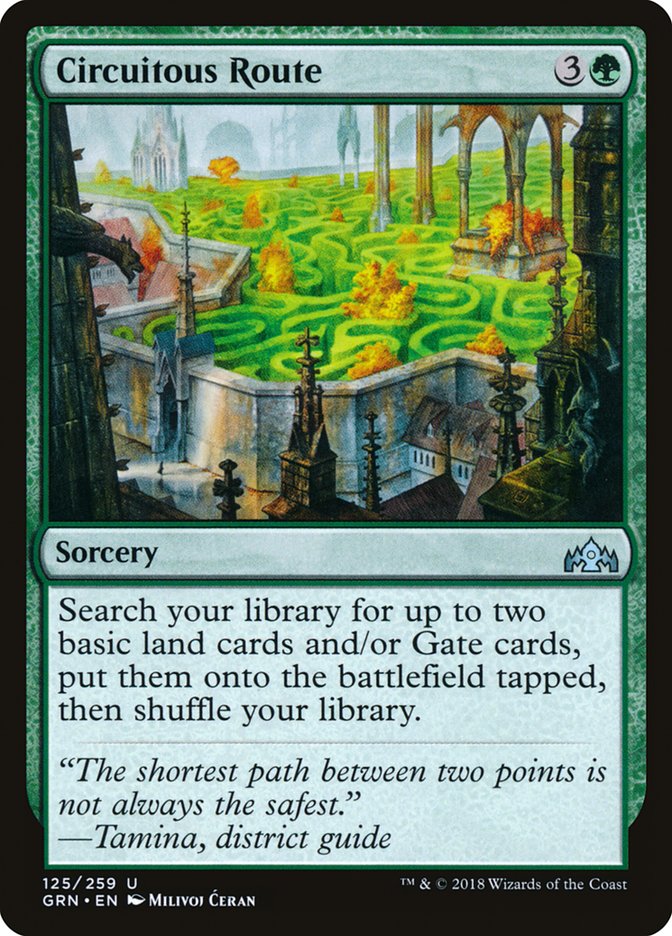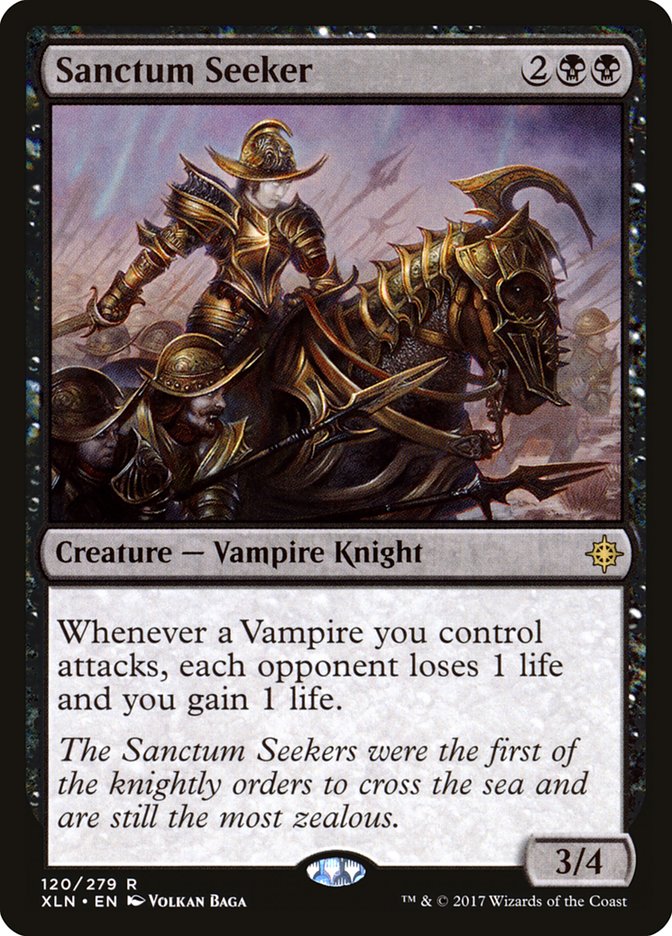It should come as no surprise that I’m a bit of a Magic hipster. I loved Scapeshift in Core Set 2020 Standard until it exploded, and now I don’t want to play it unless I can find my own twist. Often, it’s right to just play the best deck – you’d probably be foolish not to just play Hogaak in Modern right now – but there are advantages to generally trying to do something new, of course. I keep exploring and trying new things to get an advantage on the metagame rather than letting other people get an advantage on me by playing a deck they’re trying to beat.
I think Field of the Dead is likely the best card in Core Set 2020 Standard right now, but Scapeshift itself, I’m less excited about, especially when everyone is prepared to sweep an army of Zombies. So I’ve been exploring a lot of alternate Field of the Dead decks with or without Scapeshift and I’ve finally found one that stands out:
Creatures (17)
Planeswalkers (4)
Lands (29)
- 2 Forest
- 1 Plains
- 2 Island
- 1 Overgrown Tomb
- 1 Temple Garden
- 1 Stomping Ground
- 2 Breeding Pool
- 2 Hinterland Harbor
- 1 Golgari Guildgate
- 1 Izzet Guildgate
- 1 Azorius Guildgate
- 1 Selesnya Guildgate
- 1 Simic Guildgate
- 1 Gruul Guildgate
- 1 Temple of Mystery
- 1 Temple of Malady
- 1 Thornwood Falls
- 1 Field of Ruin
- 2 Plaza of Harmony
- 1 Blast Zone
- 4 Field of the Dead
Spells (10)
Sideboard

So why this collection of cards?
When I was playing Scapeshift, I found that most of the time I lost, it was because my opponent cast Nexus of Fate, so I suspected that Nexus of Fate was the best way to beat the mirror.
Nexus of Fate creates a game-winning state when you have enough mana to cast it, a way to dig for it every turn, and a small library. Wilderness Reclamation is an easy way to accomplish this because it doubles your mana and combines well with Search for Azcanta, but it’s also fragile. It’s a single card you have to find and resolve; the opponent can remove it; and Teferi, Time Raveler renders it almost irrelevant (except with Search for Azcanta). I like the Nexus end-game, but I don’t like how fragile the deck is.
If instead of leaning on Wilderness Reclamation, you just put lands onto the battlefield, you can easily get to seven mana in a way that’s much harder for your opponent to disrupt, and you also get to take advantage of Field of the Dead. If your opponent Unmoored Egos your Nexus of Fate, no problem, you can beat them with Zombies (and vice versa). This also lets you transform into a leaner deck without Nexus of Fate in matchups where the Nexus end-game is just overkill.
Of course, getting seven mana and casting Nexus of Fate once is a far cry from casting Nexus of Fate every turn. That’s easiest to accomplish with Search for Azcanta, but Tamiyo, Collector of Tales gives us another way. However, for Tamiyo to work reliably, you need a small library. Fortunately, Tamiyo is great at shrinking your library through her activations, but any help we can provide is great.
That’s where Cavalier of Thorns really shines, because each one you cast makes your deck five cards smaller in addition to all the other great things it does, and even Scapeshift offers a big jump to a lean library by pulling around eight lands onto the battlefield. Risen Reef isn’t quite the same thing, but when your opponent doesn’t kill them and you start going off by chaining Elementals, Nexus of Fate easily converts that to a victory, rather than an opportunity for your opponent to cast Kaya’s Wrath.
To sum up:
So, on the one hand, this deck is a more resilient but slower version of Simic Nexus. On the other hand, it has a lot more cards in common with Bant Scapeshift and I’m even playing Scapeshift. I don’t like leaning on Scapeshift because the sweet spot where it actually wins a game you were otherwise losing is pretty narrow. Against small decks, you’ve basically won once you start making Zombies with Field of the Dead, and most of the control and midrange decks are prepared to answer your Zombies.
Scapeshift is most effective as part of a two-card combo with Teferi, Time Raveler that makes it so your opponent never gets a chance to interact with your Zombies, but again, at the point where you’ve found and stuck Teferi and a lot of mana, the Scapeshift is rarely necessary to convert that to a win. I currently have a couple of Scapeshifts in my deck because it’s a good answer to opposing Scapeshifts, it can steal games against some people, and it’s a good combo with either Teferi or Nexus, but I don’t view it as essential.
However, I get most of my wins by overwhelming the battlefield or triggering Field of the Dead rather than by taking infinite turns, and this deck is certainly a midrange deck rather than a combo deck, I just want to have the end game that goes the most over the top of the other midrange decks.
Why Is It Well-Positioned?
- Against other Field of the Dead decks, I go over the top with Nexus of Fate, which I essentially have where they have Hydroid Krasis, which is good, but nowhere near as good.
- Against aggro decks, I sideboard out Nexus of Fate and Tamiyo, Collector of Tales for Arboreal Grazer and Hydroid Krasis and beat them by ramping into Cavalier of Thorns, which aggro decks are very bad at dealing with.
- Against control decks, I cut Nexus of Fate, Leafkin Druid, and Scapeshift to bring in Teferi, Time Raveler; Negate; and Hydroid Krasis. I then grind them out with Field of the Dead.
- Against Nexus of Fate decks, I cut Elvish Rejuvenator and Scapeshift and trim Cavalier of Thorns for Teferi, Negate, and Unmoored Ego and prevent them from going off before me.
So, big-picture, that’s why I like my plans and positioning against the format, but I also think my individual card choices give me some edges.
I found that I sideboarded Arboreal Grazer out in every matchup where the body didn’t matter, since it only occasionally ramped in a way that mattered and there were enough other alternatives. There aren’t very many matchups where the body matters, so I think using Growth Spiral and Leafkin Druid to pair with Risen Reef is a better approach, especially when there are so many Field of the Dead mirrors where Risen Reef rarely dies.
Golos, Tireless Pilgrim is an uncommon inclusion, and one that I’m going out of my way to support in my manabase in a way that may seem a little odd or excessive for a singleton, but I’ve found the mana very stable (I’m playing 29 lands, after all, and I want them to have different names anyway). Golos plays like a fifth Cavalier of Thorns and a fourth Tamiyo, and it’s incredible when it can hit Nexus of Fate fairly often. I’m not sure if the second Scapeshift or the Circuitous Route would be better as another Golos, but I do want to watch my curve.
Most Scapeshift decks don’t include the Elemental package, but I’ve been really impressed since I untap with Risen Reef so often in the current metagame, and even when I don’t, making my opponent spend time answering it isn’t bad.
As I see it, I essentially have Leafkin Druid, Risen Reef, and Cavalier of Thorns over Arboreal Grazer; Teferi, Time Raveler; and Hydroid Krasis, respectively (though amusingly, all of those are in my sideboard) because I think the Elementals are better maindeck cards. The synergies add a lot of strength when they’re combined, and I’m only excited about Arboreal Grazer when it can block, Teferi when the static ability interferes with my opponent’s gameplan, and Hydroid Krasis when my opponent can’t deal with a large body or they’re very good at trading resources (so against red or control).
Given that I have access to all of those cards, one could make the case that I’m giving up a lot of sideboard slots and it would be better to play those maindeck even if they’re slightly weaker because I’d get other sideboard cards, but I value the tuning that I get from having both packages, since I can double up on whichever part of the curve I want when I have access to all of it, and I’m honestly not that impressed by the sideboard cards available. Veil of Summer, for instance, is an amazing card, but it’s awkward enough against Teferi, Time Raveler that I’m just not that excited about having access to it.
Additionally, I think the combination of Elvish Rejuvenator; Golos, Tireless Pilgrim; and Cavalier of Thorns make me much better at finding Field of the Dead without casting Scapeshift, which really helps my fair Field of the Dead game, which I’m obviously trying to lean on, since I think that’s the best thing in the format to be doing.
The three Growth Spiral / one Circuitous Route split probably looks a little odd, but this is a clear case where I’d rather draw one of each than two of either, and essentially the first four-drop in my deck has more value than the eighth two-drop. I like having exactly one Circuitous Route because casting one gets you everything you need in terms of mana, and if you draw multiples, the second one isn’t doing as much for you and you can potentially start running into issues with having enough lands to find, especially if you’re milling yourself with Tamiyo and Cavalier of Thorns.
The biggest unanswered question for me about the deck is how it performs against nonred aggro decks like Vampires and Dinosaurs. I’ve beaten them, but for whatever reason I run into them very rarely and usually play against other blue and green decks, with a good mix of Mono-Red Aggro and Esper Hero. Ordinarily I’d think that means it doesn’t matter, but with the MPL being overrun by Vampires, I have to wonder if that’s about to be the next deck to beat. On paper, I like Field of the Dead against a lot of small creatures, but Sanctum Seeker, in particular, is threatening.
Regardless, this is a deck I put together based on some theories that has done a great job for me at playing out the way I intended, so I expect it to be my deck of choice until the format experiences another big shift.
On a related note, after having been buried in the nightmare that is Hogaak Modern, it’s great to get to start exploring this Standard format, which I’ve found to be really diverse with a lot of room for innovation and exploration, even if certain snapshots can make it seem otherwise at given moments.


